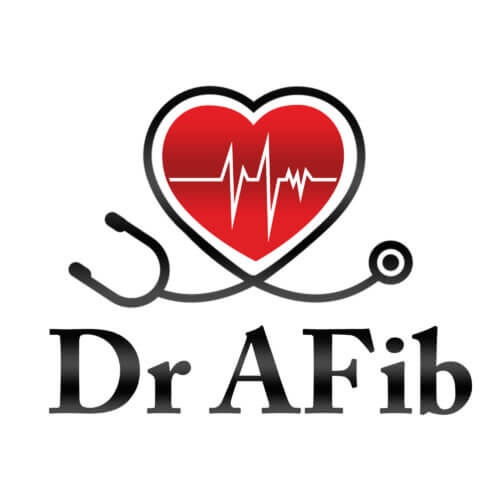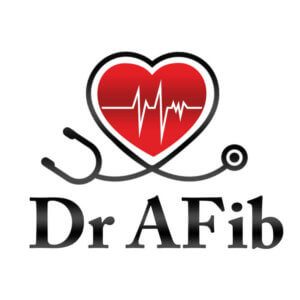In this article, we delve into the nuances of differentiating between paroxysmal vs persistent AFib. Paroxysmal AFib is temporary and often stops on its own, while persistent AFib is more constant and might call for medical intervention. This article examines the implications of each condition and their respective management strategies, arming you with the knowledge to tackle symptoms and seek appropriate treatments.
Key Takeaways
- Paroxysmal Atrial Fibrillation (PAF) is transient and episodes often end within a week, while Persistent Atrial Fibrillation (PersistAF) lasts longer than a week or requires medical intervention, both posing risks of stroke and need for management through medication, lifestyle changes, and potentially invasive procedures.
- Risk factors like hypertension, obesity, age, and structural heart changes play a role in the progression from PAF to PersistAF, and understanding these factors is essential for preventing complications and managing disease progression.
- Persistent Atrial Fibrillation represents a progression from the paroxysmal form and necessitates timely treatment to prevent advancement and mitigate health risks.
Defining Paroxysmal vs Persistent AFib

Distinct in their symptoms, durations, and underlying causes, paroxysmal and persistent atrial fibrillation represent two unique patterns of this common irregular heart rhythm. They may have varying degrees of symptoms, and treatment styles.
Paroxysmal Atrial Fibrillation
Defined by episodes that self-terminate within 7 days, paroxysmal atrial fibrillation (PAF) represents a type of AFib where the irregular heartbeat comes and goes. The duration of these episodes can range from several seconds to a week, typically resolving within 24 hours.
The intermittent nature of PAF might lead some to underestimate its severity. However, even these temporary disruptions to the heart’s normal rhythm can have significant implications. These irregular beats could potentially lead to the formation of blood clots in the heart, which could then travel to the brain, resulting in a stroke. Therefore, appropriate management of PAF is vital, regardless of the seemingly transient symptoms. In addition, untreated paroxysmal AFib will eventually progress to more persistent atrial fibrillation if nothing is done to reduce progression.
Managing PAF involves a combination of methods, including medication, lifestyle changes, and possible invasive procedures. However, early detection remains a fundamental aspect of managing any form of AF. Given that PAF episodes often subside within a day, methods like a 24-hour ECG (Holter) or extended telemetry monitors are essential for logging these brief instances of irregular heart rhythm. At home monitors such as a KardaMobile device or the Apple Watch have been very useful for many patients to track paroxysmal atrial fibrillation episodes at home.
Persistent Atrial Fibrillation
As the most common type of abnormal, rapid heartbeat, persistent atrial fibrillation (PersistAF) accounts for many AF cases. Unlike paroxysmal atrial fibrillation, persistent AFib is defined by its duration, persisting beyond 7 days, or requiring medical interventions such as pharmacologic or electrical cardioversion to restore normal heart rhythm. In this context, it is important to understand how atrial fibrillation develops and progresses to persistent atrial fibrillation.
Given its more sustained nature, persistent AFib can present a greater challenge to both patients and healthcare providers. Unlike the self-terminating episodes of PAF, persistent AFib episodes can last for prolonged periods, often requiring medical intervention to restore a normal heart rhythm. The longer the heart remains in an irregular rhythm, the higher the risk of potential complications, including stroke and heart failure.
Management of persistent AFib involves a similar approach to PAF, with the addition of potentially more aggressive treatment strategies due to its sustained nature. These may include long-term medication use, lifestyle modifications, and or invasive procedures such as catheter ablation or electrical cardioversion.
However, consistent monitoring and prompt intervention, just like in PAF, are key elements in managing persistent AFib. In general, the longer a person is in persistent atrial fibrillation, the harder it is to return a heart to the normal heart rhythm.
Risk Factors and Progression
Comprehending the risk factors for atrial fibrillation proves crucial in both its prevention and progression management. Factors such as hypertension, obesity, and age play significant roles in the development and progression of AFib, from paroxysmal to persistent forms, leading to an increased risk of complications. Additionally, chronic obstructive pulmonary disease is another condition that can influence the progression of atrial fibrillation, emphasizing its impact on clinical outcomes.
Furthermore, structural changes within the heart, such as left atrial enlargement and valvular heart disease can also contribute to this transformation.
Common Risk Factors
High blood pressure is a significant risk factor for AFib, contributing to approximately 20% of cases. It often coexists with other conditions such as left ventricular hypertrophy and increased left atrial diameter that are prevalent in AFib patients. Beyond hypertension, other risk factors such as obesity, diabetes, heart failure, ischemic heart disease, hyperthyroidism, and chronic kidney disease increase with age, further elevating the risk of AFib.
Lifestyle choices also substantially influence the risk of developing AFib. Moderate to heavy alcohol consumption, smoking, and a sedentary lifestyle are associated with an elevated risk. Therefore, making healthier lifestyle choices can play a pivotal role in preventing AFib. In addition, people of European ancestry have a higher propensity to experience AFib compared to African Americans, indicating a potential genetic component to this condition.
In essence, controlling these risk factors is an integral part of the prevention and progression management of AFib. Regular check-ups, adopting a healthy lifestyle, and taking prescribed medications can help manage these risk factors and potentially prevent the onset or progression of AFib.
Progression from PAF to PersistAF
The progression from Paroxysmal to Persistent AFib can occur when the heart’s electrical impulses become increasingly chaotic, causing more sustained periods of arrhythmia. This progression is influenced by several factors, including:
- Hypertension
- Obesity
- Age
- Certain structural changes within the heart, such as left atrial enlargement and fibrosis in the atrial tissue
Another significant contributor to this progression is heart failure. As the heart’s ability to pump blood efficiently deteriorates, the increased workload can lead to structural changes within the heart, promoting the progression from PAF to PersistAF.
Therefore, comprehension of the contributing factors to AFib progression is critical for its management. By controlling these risk factors, we can potentially delay or even prevent the progression from PAF to PersistAF, decreasing the risk of complications and improving overall health outcomes.
Clinical Outcomes and Complications
AFib, whether paroxysmal or persistent, poses significant health risks. These include an elevated risk of stroke, thromboembolic events, and higher mortality rates. Patients with persistent AFib, in particular, tend to be at a higher risk for these adverse outcomes.
Consequently, grasping these risks and implementing strategies to lessen them is a vital part of AFib management.
Stroke Risk
Stroke risk varies between different types of AFib. Research from the Fushimi Atrial Fibrillation Registry indicated that patients with PAF show a lower risk of stroke or systemic embolism compared to those with sustained AF. However, the COOL-AF registry reported no significant differences in the risk of ischemic stroke between paroxysmal, persistent, and permanent AF patterns. These varying reports highlight the complexity of stroke risk in AF and the need for individualized patient assessment. In general, a patient’s CHADSVasc score is the main determinant on whether a patient with paroxysmal vs persistent atrial fibrillation will benefit from oral anticoagulants for stroke risk reduction.
Disruptions to the heart’s normal rhythm can lead to the formation of blood clots, which, if dislodged, can travel to the brain and block blood flow, causing a stroke. As stroke stands as a leading cause of death and disability globally, regulating stroke risk becomes an essential part of AFib management. This often involves the use of anticoagulant medications to prevent blood clot formation.
Thromboembolic Events
The risk of thromboembolic events, or the formation of blood clots within blood vessels, is another significant concern in AF. Paroxysmal AFib is an independent predictor of lower thromboembolic event risk compared to other forms of AF. However, patients with PAF who transition to persistent AFib have a higher annual incidence of these events.
Thromboembolic events can have severe consequences, including stroke and systemic embolism, where a blood clot travels through the bloodstream and blocks blood flow to a vital organ. This potential complication further emphasizes the need for sufficient anticoagulation therapy in AFib management. By preventing blood clot formation, anticoagulant medications can significantly reduce the risk of thromboembolic events.
Despite some data showing a lower risk associated with PAF, it is crucial to remember that the progression to PersistAF can lead to an elevated risk of these events. Therefore, consistent monitoring and prompt action are essential in thwarting this progression and controlling thromboembolic risk.
Mortality Rates
Persistent and permanent atrial fibrillation are associated with higher all-cause mortality compared to paroxysmal atrial fibrillation. This difference in mortality rates is significant, even when underlying comorbidities are accounted for. Examination of all-cause mortality rates between PAF and PersistAF patients is critical to understanding the full impact of these conditions.
Mortality risk in AFib is often multifactorial, influenced not just by the AFib itself, but also by the presence of other comorbidities such as heart failure and stroke. Therefore, managing these associated conditions is just as important in reducing mortality risk in AFib patients. This often involves a multidisciplinary approach, incorporating medication management, lifestyle changes, and, in some cases, invasive procedures.
The elevated mortality rates linked with persistent and permanent AF highlight the significance of hindering the progression from PAF to these more prolonged forms of AFib. By managing risk factors, adhering to treatment plans, and maintaining regular follow-ups, patients can significantly improve their prognosis and quality of life.
Treatment Approaches for PAF and PersistAF

Whether an individual has paroxysmal or persistent AF, the primary goal of treatment is to restore normal heart rhythm (when possible), control heart rate, and prevent blood clots. Different approaches, including medication, lifestyle changes, and invasive procedures, can be used depending on the nature and severity of the AF. However, the treatment choice typically hinges on the individual patient’s requirements, existing conditions, and the AFib type.
Medication and Anticoagulation
Medication forms the cornerstone of AF management. In both types of AF, medications such as digoxin, beta-blockers, and calcium channel blockers are commonly prescribed to control heart rate. Meanwhile, sodium channel blockers or potassium channel blockers are common anti-arrhythmic medications that can regulate heart rhythm.
Anticoagulant medications, such as warfarin and apixaban, are typically used to prevent blood clot formation in AFib patients. These medications work by interfering with the body’s natural clotting process, reducing the risk of stroke and other thromboembolic events. However, the use of these medications must be carefully monitored, as they can:
- Increase the risk of bleeding
- Interact with other medications and foods
- Require regular blood tests to monitor the effectiveness and safety
- Have potential side effects such as bruising and gastrointestinal bleeding
It is important for patients taking anticoagulant medications to follow their healthcare provider’s instructions and report any unusual symptoms or side effects.
Despite the potential risks, anticoagulant therapy is a vital component of AFib management. The relative treatment benefits of different anticoagulants are consistent among patients with both persistent and paroxysmal AFib.
Lifestyle Changes

Alongside medication, bringing about lifestyle changes also plays a vital role in managing AF. Adopting a low-salt diet and moderating caffeine and alcohol intake are essential dietary changes for managing this condition. Regular physical activity, such as a daily 30-minute brisk walk, aids in weight reduction and blood pressure control, which are vital for reducing the risk of arrhythmias in AF patients.
Smoking cessation is another important lifestyle change for those with AF. There are many programs designed to aid patients in tobacco cessation, which can significantly reduce the risk of AF and its complications. Additionally, managing stress through practices such as:
- therapy
- breathing exercises
- yoga
- acupuncture
Blending these lifestyle changes with medication and possible procedures can lead to an all-encompassing management of AF. It is important to remember that managing AF is a long-term commitment, and these lifestyle changes need to be maintained to effectively manage the condition.
Treatment for Persistent Atrial Fibrillation with Cardioversion
For individuals with persistent atrial fibrillation, cardioversion can be a pivotal treatment option. This procedure aims to reset the heart’s rhythm back to its regular pattern. Cardioversion can be performed in two ways: pharmacologically, using antiarrhythmic drugs, or electrically, where a controlled electric shock is delivered to the heart through the chest wall while the patient is under brief anesthesia.
Electrical cardioversion is often considered when medication does not adequately control the heart rhythm or when a rapid response is required. Prior to the procedure, anticoagulation therapy is usually administered to reduce the risk of stroke. The success rate of cardioversion varies, but many patients experience immediate restoration of normal heart rhythm. However, some may require additional or alternative treatments, such as medication adjustments or catheter ablation, if atrial fibrillation recurs.
Invasive Procedures: Catheter Ablation
Invasive procedures such as catheter ablation, and surgical ablation may be considered for AFib patients when medications are not effective in regulating heart rhythm.
Catheter ablation involves the insertion of a catheter through a blood vessel to the heart. The doctor then uses either heat (radiofrequency energy) or cold (cryoablation) to create small strategic scars in the heart tissue, which can prevent the irregular electrical signals that cause AFib. In contrast, surgical ablation is a more invasive procedure where the surgeon creates scars on the outer surface of the heart to block abnormal electrical signals.
While invasive procedures can be more effective in managing AF when compared to medical therapy, they are not without risks. Potential complications can include bleeding, infection, and damage to the heart or blood vessels. Therefore, a decision to undertake an invasive procedure should only be reached after a detailed patient-healthcare provider discussion, balancing the potential benefits with the risks.
Read more about catheter ablation for atrial fibrillation here.
Monitoring and Follow-Up Care
Regular AFib follow up care is critical to:
- Detect any alterations in the condition’s severity over time
- Reduce risk of stroke
- Manage symptoms
- Ensure medication compliance
- Uphold lifestyle practices.
Routine Clinical Practice
Managing AF in routine clinical practice necessitates regular medical check-ups and diligent monitoring of the heart’s rhythm. Some common methods used for monitoring AFib episodes include:
- 24-hour ECG (Holter) monitoring
- Event monitoring
- Mobile cardiac telemetry
- Implantable loop recorders
- At home AFib monitors such as KardiaMobile or Apple Watch
Regular assessments in clinical practice are essential to monitor a patient’s condition, the effectiveness of medications, and to determine if there is a need for adjustments in the treatment plan.
In addition to traditional clinical monitoring, patients can also benefit from using technology for self-monitoring of their heart rate and symptoms. Devices such as smartwatches and mobile applications can provide real-time feedback on heart rate and rhythm, alerting patients to potential AF episodes. This allows patients to seek medical attention promptly, potentially preventing complications and improving outcomes.
The data accrued from these devices can offer useful insights to healthcare providers, enabling them to:
- Customize treatment plans based on the patient’s distinct AFib pattern
- Transition towards a more personalized AFib management approach
- Boost patient engagement
- Elevate overall care.
Patient Education
Education plays a key role in managing AFib. Understanding the nature of one’s condition, the differences between paroxysmal and persistent AFib, and the potential risks and complications associated with AF, can empower patients to take an active role in their care. This includes learning self-monitoring techniques such as pulse checks and symptom diaries, which can assist patients in recognizing irregular heartbeats and symptom patterns, enabling early intervention.
Beyond self-monitoring, patient education also encompasses understanding the importance of medication adherence, recognizing the signs of potential complications, and knowing when to seek medical attention. Healthcare providers can facilitate this education through various means, including patient counselling, educational materials, and digital platforms.
Enhanced comprehension and careful self-monitoring aid in better AFib management, potentially lowering complication risks and improving the overall patient quality of life. Empowering patients with the knowledge to manage their condition effectively is a crucial aspect of comprehensive AFib care.
Summary
Atrial fibrillation, whether paroxysmal or persistent, affects the harmony of our heart’s rhythm. While they share commonalities, understanding the unique characteristics, risks, and management strategies of each type empowers us to take control of our heart health. From recognizing risk factors and symptoms to adopting lifestyle changes and adhering to treatment plans, each step we take contributes to better management of AF.
While the journey may seem daunting, remember that managing AF is not a solo performance. It’s a symphony, played in harmony by you, your healthcare providers, and your loved ones. With knowledge as our conductor, we can face the music, restore the rhythm, and keep our hearts playing the melody of life.
Frequently Asked Questions
What is the difference between paroxysmal and persistent atrial fibrillation?
Paroxysmal atrial fibrillation self-terminates within 7 days, often within 24 hours, while persistent atrial fibrillation lasts beyond 7 days or requires medical intervention to restore normal heart rhythm. Both types have different durations and management approaches.
What are the common risk factors for atrial fibrillation?
Common risk factors for atrial fibrillation include high blood pressure, obesity, diabetes, heart failure, ischemic heart disease, and lifestyle choices such as alcohol consumption and smoking. These factors can significantly increase the likelihood of developing atrial fibrillation.
What are the potential complications of atrial fibrillation?
Atrial fibrillation can lead to serious complications such as stroke, thromboembolic events, and higher mortality rates, particularly in patients with persistent atrial fibrillation. It is important to be aware of these potential risks and consult with a healthcare professional for appropriate management.
What are the treatment options for atrial fibrillation?
The treatment options for atrial fibrillation include medication, lifestyle changes, and in some cases, invasive procedures like electrical cardioversion and cardiac ablation, tailored to the type of AF and the patient’s specific needs.
Why is regular monitoring and follow-up care important in managing atrial fibrillation?
Regular monitoring and follow-up care are important in managing atrial fibrillation because they help identify changes in the condition, manage symptoms, ensure medication adherence, and prevent the progression of the condition, ultimately leading to improved health outcomes.
The Best Atrial Fibrillation Book
Your Complete Guide To AFib: The Essential Manual For Every Patient With Atrial Fibrillation

Shop AFib Products on Amazon
KardiaMobile 6-Lead Personal EKG Monitor – Six Views of The Heart – Detects AFib and Irregular Arrhythmias – Instant Results in 30 Seconds – Works with Most Smartphones - FSA/HSA Eligible
13% Off
KardiaMobile 1-Lead Personal EKG Monitor – Record EKGs at Home – Detects AFib and Irregular Arrhythmias – Instant Results in 30 Seconds – Easy to Use – Works with Most Smartphones - FSA/HSA Eligible
$79.00 (as of June 2, 2025 14:07 GMT -06:00 - More infoProduct prices and availability are accurate as of the date/time indicated and are subject to change. Any price and availability information displayed on [relevant Amazon Site(s), as applicable] at the time of purchase will apply to the purchase of this product.)
Apple Watch Series 9 [GPS 41mm] Smartwatch with Storm Blue Aluminum Case with Silver Sport Band M/L. Fitness Tracker, Blood Oxygen & ECG Apps, Always-On Retina Display
(as of June 2, 2025 07:18 GMT -06:00 - More infoProduct prices and availability are accurate as of the date/time indicated and are subject to change. Any price and availability information displayed on [relevant Amazon Site(s), as applicable] at the time of purchase will apply to the purchase of this product.)
Fitbit Sense 2 Advanced Health and Fitness Smartwatch with Tools to Manage Stress and Sleep, ECG App, SpO2, 24/7 Heart Rate and GPS, Shadow Grey/Graphite, One Size (S & L Bands Included)
20% Off
OMRON 2-in-1 Upper Arm Blood Pressure Monitor & 1-Lead EKG Monitor - Clinically Validated Blood Pressure Arm Cuff & Machine - Use OMRON Connect App
17% Off
Samsung Galaxy Watch 6 44mm Bluetooth Smartwatch, Fitness Tracker, Personalized HR Zones, Advanced Sleep Coaching, Heart Monitor, BIA Sensor, Health Wellness Insights, Big Screen, US Version, Graphite
52% Off $329.99 (as of June 2, 2025 19:34 GMT -06:00 - More infoProduct prices and availability are accurate as of the date/time indicated and are subject to change. Any price and availability information displayed on [relevant Amazon Site(s), as applicable] at the time of purchase will apply to the purchase of this product.)
Natural Rhythm Triple Calm Magnesium 150 mg - 120 Capsules – Magnesium Complex Compound Supplement with Magnesium Glycinate, Malate, and Taurate. Calming Blend for Promoting Rest and Relaxation.
$20.77 ($0.17 / Count) (as of June 2, 2025 16:17 GMT -06:00 - More infoProduct prices and availability are accurate as of the date/time indicated and are subject to change. Any price and availability information displayed on [relevant Amazon Site(s), as applicable] at the time of purchase will apply to the purchase of this product.)
Pure Encapsulations Magnesium (Glycinate) - Supplement to Support Stress Relief, Sleep, Heart Health, Nerves, Muscles, and Metabolism* - with Magnesium Glycinate - 180 Capsules
$44.60 ($0.25 / Count) (as of June 2, 2025 07:18 GMT -06:00 - More infoProduct prices and availability are accurate as of the date/time indicated and are subject to change. Any price and availability information displayed on [relevant Amazon Site(s), as applicable] at the time of purchase will apply to the purchase of this product.)















![Apple Watch Series 9 [GPS 41mm] Smartwatch with Storm Blue Aluminum Case with Silver Sport Band M/L. Fitness Tracker, Blood Oxygen & ECG Apps, Always-On Retina Display #1](https://m.media-amazon.com/images/I/311xwtp4mFL._SL100_.jpg)
![Apple Watch Series 9 [GPS 41mm] Smartwatch with Storm Blue Aluminum Case with Silver Sport Band M/L. Fitness Tracker, Blood Oxygen & ECG Apps, Always-On Retina Display #2](https://m.media-amazon.com/images/I/41j+8AaUGsL._SL100_.jpg)
![Apple Watch Series 9 [GPS 41mm] Smartwatch with Storm Blue Aluminum Case with Silver Sport Band M/L. Fitness Tracker, Blood Oxygen & ECG Apps, Always-On Retina Display #3](https://m.media-amazon.com/images/I/41jIyxZitnL._SL100_.jpg)
![Apple Watch Series 9 [GPS 41mm] Smartwatch with Storm Blue Aluminum Case with Silver Sport Band M/L. Fitness Tracker, Blood Oxygen & ECG Apps, Always-On Retina Display #4](https://m.media-amazon.com/images/I/41IpNJERjCL._SL100_.jpg)
![Apple Watch Series 9 [GPS 41mm] Smartwatch with Storm Blue Aluminum Case with Silver Sport Band M/L. Fitness Tracker, Blood Oxygen & ECG Apps, Always-On Retina Display #5](https://m.media-amazon.com/images/I/31o17yhfYpL._SL100_.jpg)






































